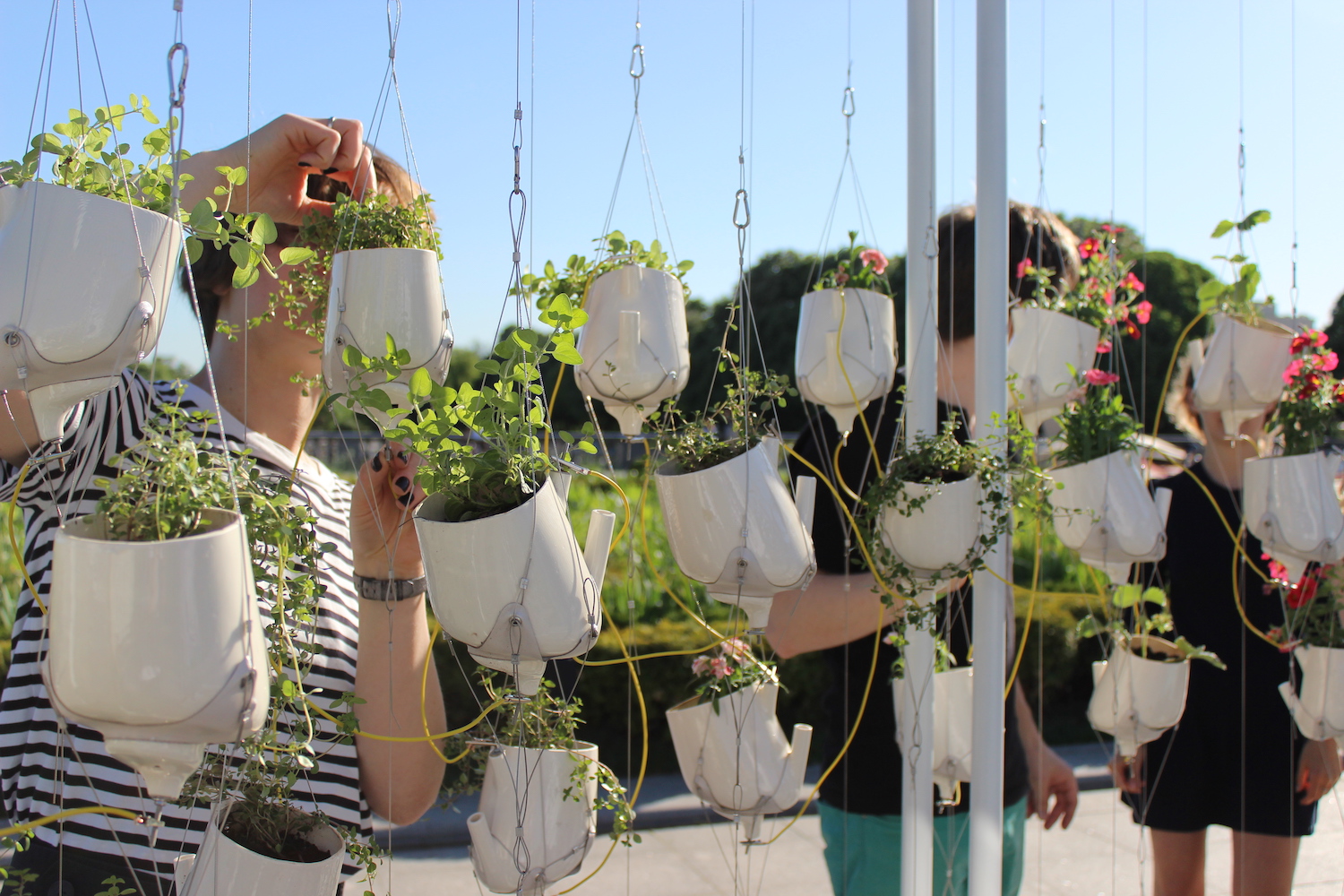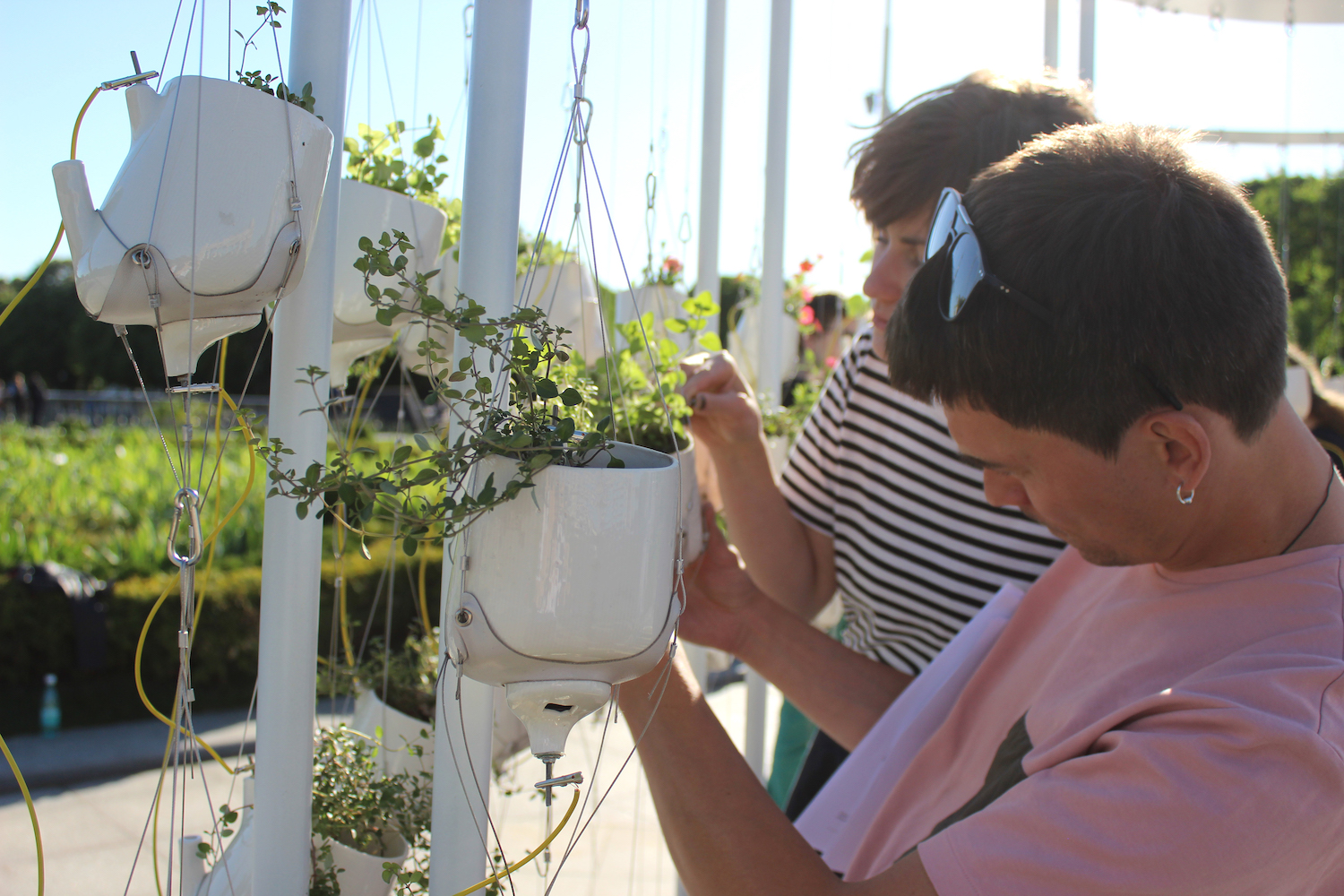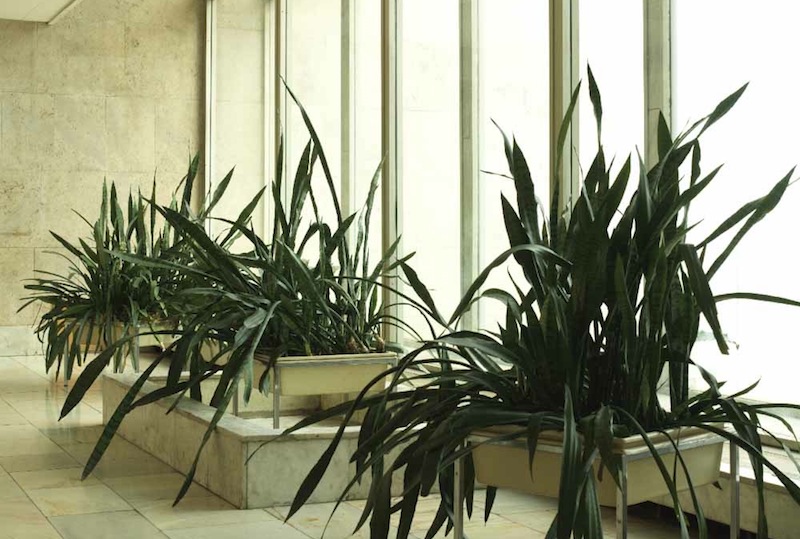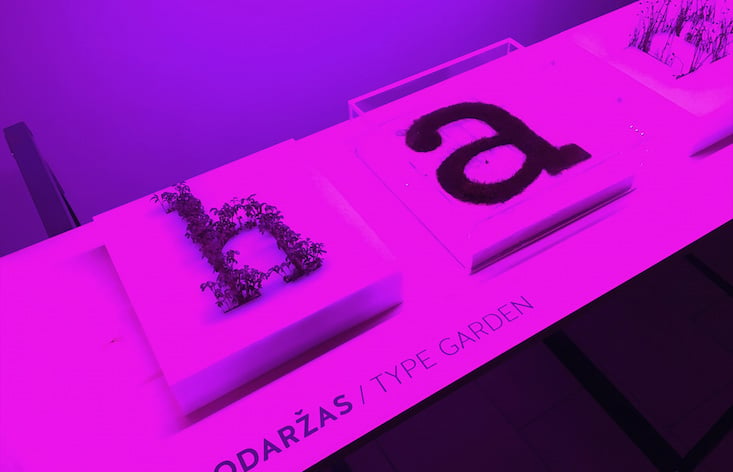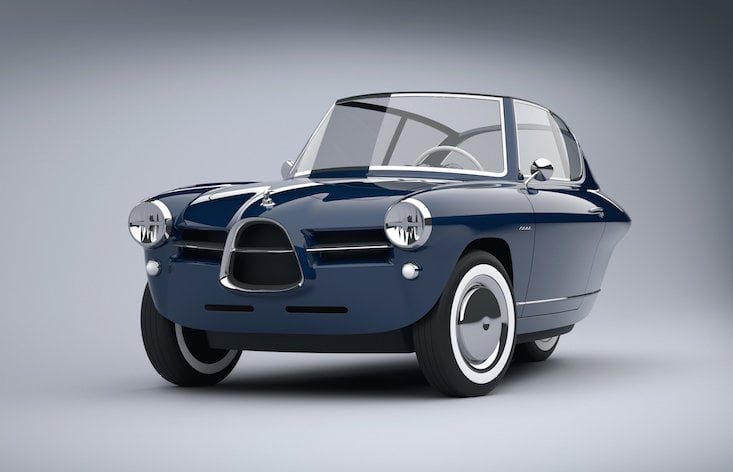Meet the Russian designer wiring garden greenery to generate electricity
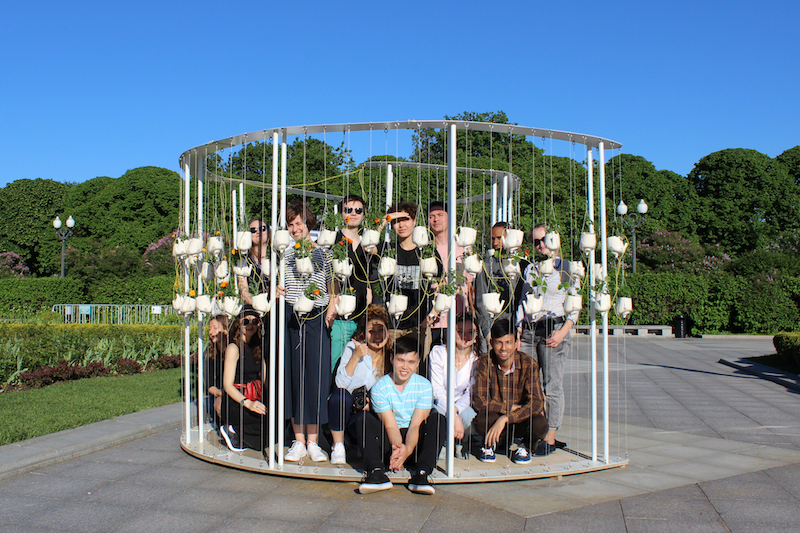
In 2019, smoke and smog still choke our cities. Fossil fuels may have long fallen out of vogue, but the transition to renewable energy has been a long one. For many, clean energy sources still pose issues — whether that’s finding space for wind turbines, or leaving solar panels to face the uncertainty of the weather.
With temperatures and sea levels rising, researchers across the globe are still looking for alternatives — including Russian designer Elena Mitro. Her project, Green Spark, focuses on producing electricity through plant power: boosting local power grids and providing a better urban environment for modern city dwellers.
“I’ve had the chance to live in different cities with very different amounts of green space,” she told The Calvert Journal. “There is definitely a direct correlation between nature and our own physical and mental health. I want our cities to become more green.”
Her system works using plants placed in small ceramic pots. During the process of photosynthesis, the plants use light energy to consume carbon dioxide and water from the environment around them. These are converted into organic compounds and released through the roots, where they react with the bacteria in the soil.
The bacteria break down matter in the soil, liberating free electrons. By adding an electrode — a pathway for the electricity to leave the soil — power can be harvested from these microorganisms.
Elena’s Green Spark installation in Moscow’s Gorky Park used 86 pot plants, generating enough power to charge two smartphones simultaneously. That clearly isn’t enough to render power plants obsolete — for now — but the system could also be used on a much larger scale, embedded into local urban infrastructure.
“[The cells] could be used on any scale: it has a module that can be iterated and combinated in many different configurations,” Mitro says. “Now, it is more a question of design and future maintenance.”
With more scientists looking to the natural world to solve humanity’s problems — such as using bacteria or plants to filter polluted waters — the idea of harnessing worlds only visible through a microscope is set to become a larger conservation trend, says Mitro. It will be down to designers, however, to apply this scientific knowledge to more practical problems — even if many are currently more concerned with aesthetics than eco-friendly credentials.
“I guess that the most exciting thing is that urbanism is finally accepted as a science — not only in big cities, but all across [Russia],” Mitro says. “Greater access to digital information and this network of open knowledge is bringing communities to life, igniting a will and desire to change.”
